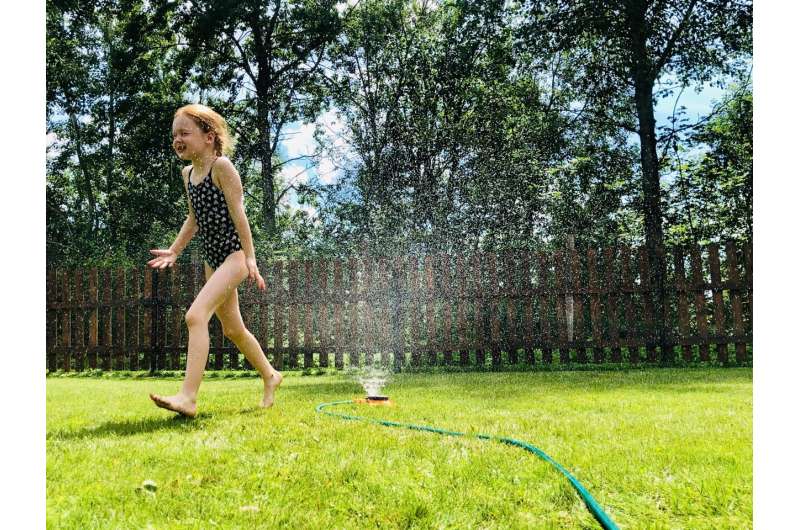Yard size does not impact children’s physical activity levels

Yard size does not affect children’s physical activity levels, according to a new study, suggesting outdoor play mightn’t be impacted as cities densify and backyards shrink.
The research led by the Murdoch Children’s Research Institute (MCRI) and the University of Melbourne, showed no association between yard space and greenness and physical activity, highlighting a child’s capacity to engage in outdoor play regardless of the size or amount of vegetation in their yards.
MCRI researcher Jessica Oakley said prior to this study few had examined the relationship between the outdoor home environment and child physical activity despite concerns that decreasing yard sizes and high-rise apartment living could come at cost to health.
The research, published in BMC Public Health, involved 5,276 six-year-olds living in Melbourne. Physical activity was recorded using an accelerometer, a wearable tool that measures acceleration, over eight days.
The research found for every 10 percent increase in yard size there was almost no rise in sedentary behavior and light or moderate to vigorous physical activity. On average the children were meeting the physical activity guidelines of at least 60 minutes a day of moderate to vigorous physical activity.
Ms Oakley said the findings showed yard size and greenness didn’t have a major impact on children’s physical activity.
“This suggests that child physical activity may not suffer as we densify our cities and reduce the size of yards,” she said. “There was also no link between the amount of yard greenness and physical activity or outdoor play.”
MCRI’s and the University of Melbourne’s Dr. Suzanne Mavoa said with outdoor play in younger children decreasing, identifying ways to promote physical activity was a public health priority.
“Physical activity has health and developmental benefits for young children, including mitigating the risks of obesity and chronic diseases such as diabetes and heart disease and improving motor and cognitive development,” she said.
“As cities become increasingly densified, urban design, shared indoor and outdoor spaces and schools will need to play a greater role in supporting young children’s physical activity and active play.”
MCRI Professor and GenV Scientific Director Melissa Wake said it was also crucial that State Governments and local councils also protected public green spaces for families with no access to yards.
“This research indicates the importance and value of public outdoor spaces such as parks in supporting physical activity and play for all children, no matter their background or where they live,” she said. “Improving equity in health outcomes for all children is a core value of MCRI’s GenV research project.
Source: Read Full Article


